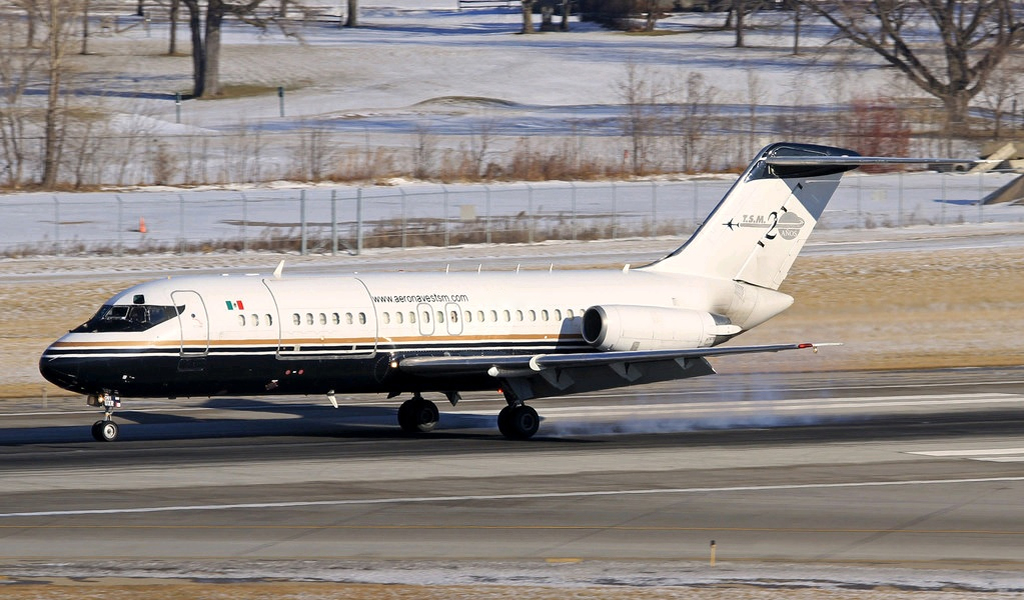McDonnell Douglas DC-9-10
Seats
Maximum Range (nm)
1263
ICAO Code
DC91

McDonnell Douglas DC-9-10
Introduction
The McDonnell Douglas DC-9-10 was the first model in the iconic DC-9 series, marking the beginning of a highly successful line of short- to medium-haul jetliners. Introduced in the mid-1960s, the DC-9-10 was designed for high-frequency operations from short runways, offering jet service to smaller airports previously served only by turboprops. Though largely retired from commercial fleets, this aircraft remains an important milestone in regional jet history and is still in use in limited cargo, private, or government roles.
Specification of McDonnell Douglas DC-9-10
Manufacturer: McDonnell Douglas (USA)
Model: DC-9-10 (initial DC-9 variant)
Crew: 2 pilots + 2–3 cabin crew
Passenger Capacity: 75–90 passengers (typical 5-abreast layout)
Engines: 2 × Pratt & Whitney JT8D-5 turbofan engines
Length: 31.8 m (104 ft 5 in)
Wingspan: 27.25 m (89 ft 5 in)
Height: 8.4 m (27 ft 6 in)
Maximum Takeoff Weight (MTOW): 38,100 kg (84,000 lbs)
Baggage Capacity: Approx. 1,050 ft³ (29.7 m³)
Performance and Range of McDonnell Douglas DC-9-10
Designed for regional and short-haul operations, the DC-9-10 offered solid performance in its era:
Cruise Speed: 876 km/h (473 knots / Mach 0.80)
Maximum Range: Approx. 2,190 km (1,180 nautical miles)
Service Ceiling: 35,000 ft
Takeoff Distance: Approx. 1,700 m (5,577 ft)
Landing Distance: Approx. 1,300 m (4,265 ft)
Its rugged design and strong performance enabled reliable service in demanding operating environments.
Cabin Comfort and Interior of McDonnell Douglas DC-9-10
The DC-9-10 featured a pressurized cabin with a straightforward and functional layout for regional travel:
Seating Configuration: 5-abreast (2-3) seating
Cabin Length: Approx. 21.6 m (71 ft)
Cabin Width: 3.1 m (10 ft 2 in)
Lavatories: 1–2, depending on configuration
Overhead Storage: Smaller than modern standards but sufficient for short-haul baggage
Noise Level: Higher than newer jets due to rear-mounted engines and older insulation
While not luxurious by modern standards, the DC-9-10 offered reliable comfort for short flights and featured early advancements in pressurization and airflow.
Avionics and Technology of McDonnell Douglas DC-9-10
The DC-9-10 was equipped with analog flight instruments, with many aircraft later upgraded:
Original Cockpit: Traditional analog “steam gauge” layout
Navigation Systems: VOR, DME, ADF, and ILS capability
Autopilot: Basic heading and altitude hold
Upgrades: Some units received TCAS, weather radar, GPS, and digital radios to meet modern regulatory standards in cargo or special missions
Despite its age, the DC-9’s systems were respected for their simplicity and reliability.
Operational Advantages of McDonnell Douglas DC-9-10
Even decades after its debut, the DC-9-10 offers notable strengths:
Short-Field Capability: Excellent for smaller runways and high-altitude airports
Durability: Proven airframe with high cycle-count resilience
Simplicity: Mechanically straightforward, making it easier to maintain in the field
Rear-Mounted Engines: Reduced debris ingestion on unpaved or rough runways
Stability: Excellent low-speed handling and approach characteristics
These advantages made it a favorite for operators serving challenging routes in the early jet age.
Who Should Charter McDonnell Douglas DC-9-10
While rare in charter today, the DC-9-10 could suit:
Government and Military Missions: Troop transport, cargo, or training aircraft
Special Purpose Flights: Aerial research, firefighting conversion, or flight testing
Heritage or VIP Operators: For nostalgic jetliners with customized interiors
Film Production or Airshows: Ideal for vintage aircraft shoots or displays
Operators using the DC-9-10 today often do so in non-passenger roles, though a few may offer VIP or cargo conversions.
Charter Cost Estimates for McDonnell Douglas DC-9-10
Due to limited availability, the cost depends heavily on the operator and mission type:
Hourly Charter Rate: $5,000 – $7,000 USD (if available for charter)
Cargo/Airlift Missions: Custom quotes depending on payload and route
Special Projects: Negotiable based on location and aircraft condition
Most current operations are under military or private contracts rather than open-market charters.
Conclusion
The McDonnell Douglas DC-9-10 stands as a classic regional jet that helped bring jet travel to smaller cities in the 1960s and beyond. Known for its sturdy design, short-runway capability, and no-nonsense performance, it paved the way for future generations of regional jets. Though largely phased out of commercial service, its legacy continues through military, government, and niche operators who value its rugged dependability and historical significance.
